When you’re taking cuttings from a plant, one of the most important steps is choosing the right material. The type of cutting you select plays a huge role in whether or not it will root successfully. In this post, I’ll walk you through what I look for when taking cuttings from shrubs and perennials and share some practical tips to help you get better propagation results.
I’m using a ‘Shasta’ viburnum today as a demo plant, but the same principles apply to many shrubs and perennials in your garden. Watch the video below or read below for the text version.
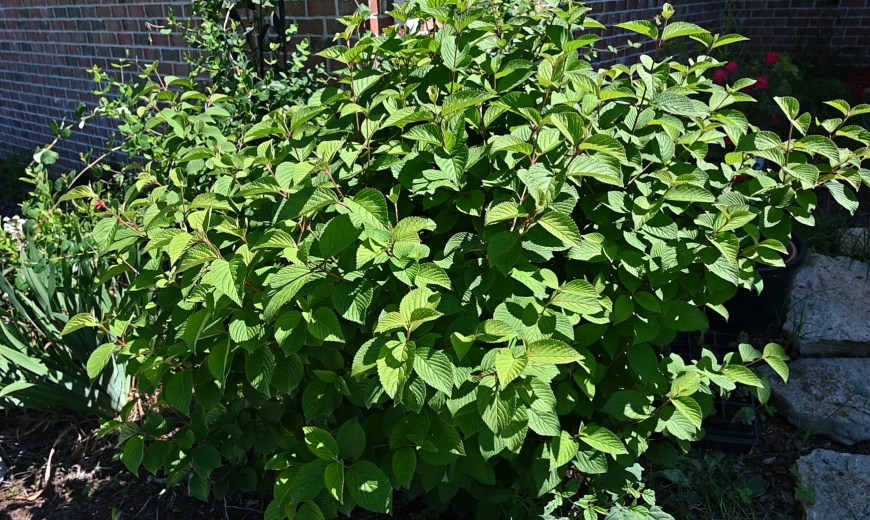
What Kind of Growth Should You Take?
The key to successful cuttings is identifying the new season’s growth. That’s the greenish or slightly brown flexible wood near the ends of the branches — not the older, woody stems from previous years.
Example from a ‘Shasta’ Viburnum (Viburnum plicatum var. tomentosum)
When looking at a branch:
- The older growth is brown and hardened — this is from last season.
- The new growth is usually greenish and slightly pliable — this is what you want for greenwood cuttings.
- New wood and old wood usually have a small little ring around the branch from where the new growth began.
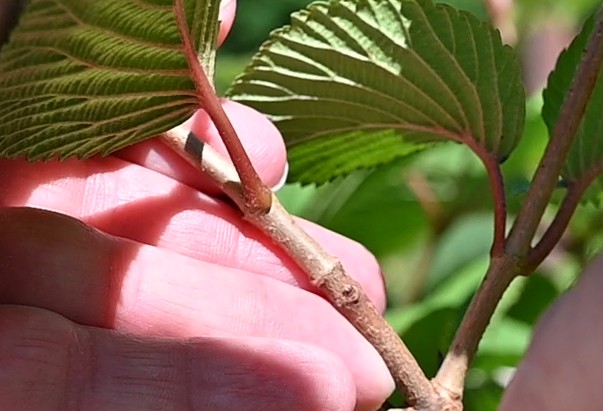
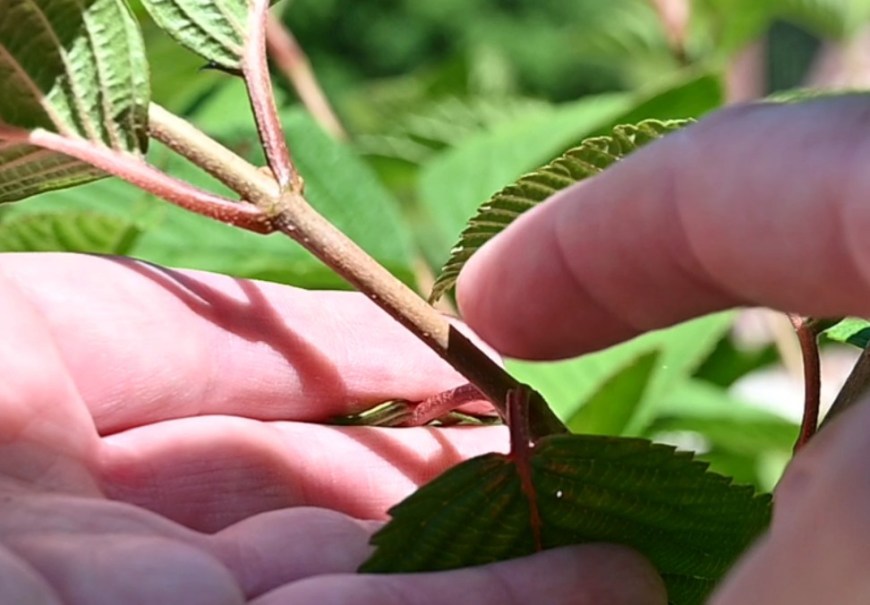
I look for about three nodes on the cutting — those are the joints on a stem where leaves or branches emerge. Cut just below the bottom node for the best rooting chance. Selecting a cutting with more nodes is fine but I try to keep the cutting to no more than 6 or 8 inches long in most cases. As always there can be exceptions!
What to Look For When Taking Cuttings
Here’s a quick checklist to help you identify good cutting material:
- New season growth – Avoid woody, mature stems from previous years.
- Firm, not floppy – The cutting should be flexible but not too soft. Cut off excessively soft tips.
- Three nodes per cutting – More nodes = more potential rooting points.
- Cut just below a node – Nodes are where roots are most likely to form.
- Avoid flower buds – These can reduce rooting success.
- No disease or damage – Healthy growth only.
Examples from the Garden
The below examples are for my Zone 7b garden so you may have to adjust your timeframe to you zone.
Boxwood
- Roots easily, even without rooting hormone.
- Right now (May, in Zone 7), the growth is too soft.
- Best to wait until June for firmer cuttings.
Related Article: How to Propagate Boxwood From Cuttings
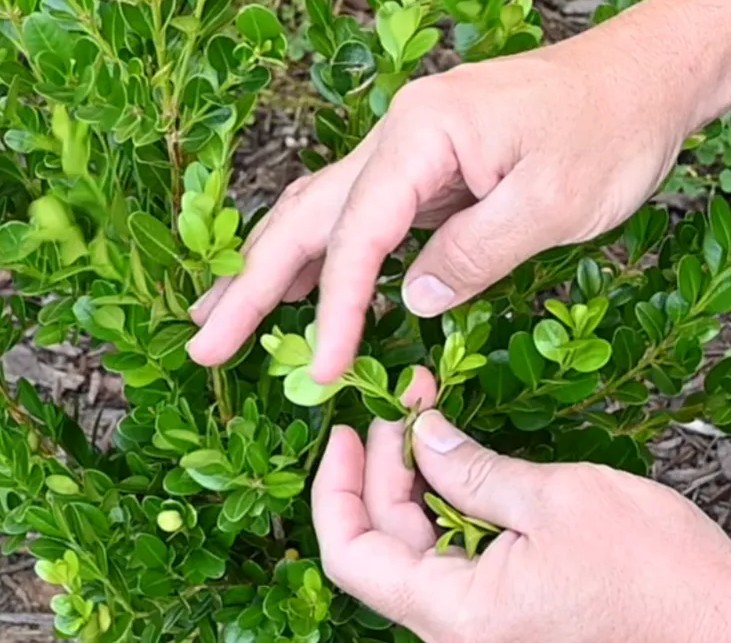
‘Green Giant’ Arborvitae
- Very forgiving and easy to root.
- Slightly more flexible cuttings are okay.
- Just make a clean cut below the third node and strip off lower leaves.
Related Article: Propagating Arborvitae from Cuttings
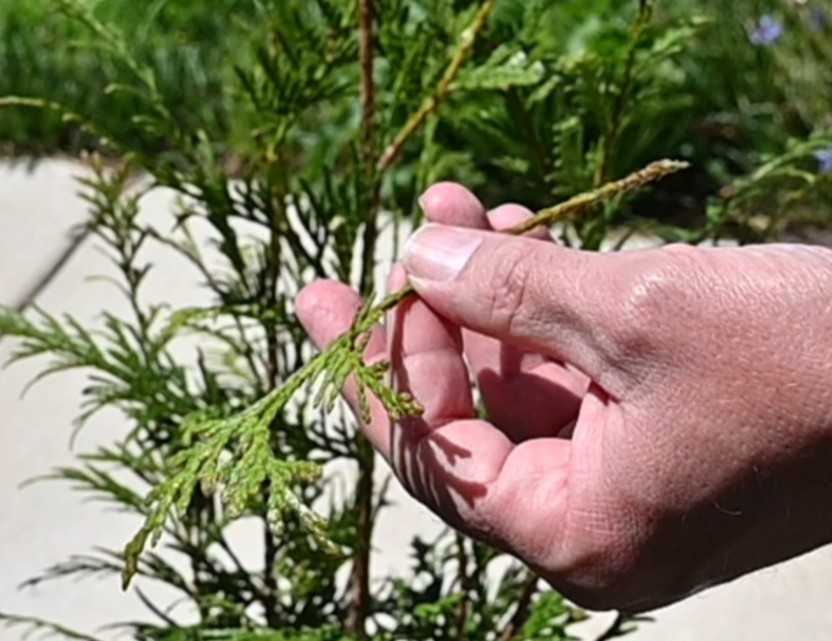
Little Spire Russian Sage
- Ideal for softwood or semi-ripe cuttings.
- Can root from internodes, not just nodes.
- Stems are firm and plentiful — perfect material right now.
- Cut away the very tips if they’re too soft.
Related Article: How to Propagate Russian Sage from Cuttings
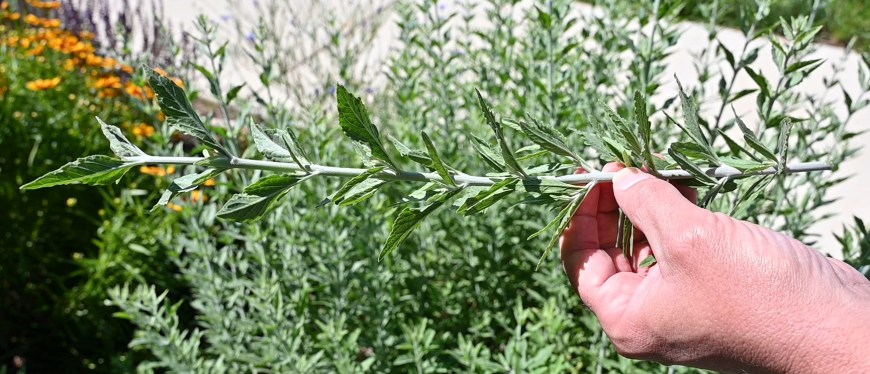
Quick Tips for Better Propagation
- Use clean, sharp pruners to avoid damaging the plant tissue.
- Pinch off the terminal bud (apical bud) to encourage rooting and lateral growth.
- Keep your cuttings moist and out of direct sun until rooted. For many years I used the dappled shade underneath a Japanese maple tree, but since we moved I started doing my cuttings under my seed starting setup lights. Once I get an area set up I’ll resume cuttings outdoors with a misting setup.
- Stick cuttings in a well-draining mix. Mediums like perlite and peat, sand, sand/peat, or sand/coir work well.
- Label your cuttings — especially if you’re taking several types at once! Especially if you are taking cuttings from different varieties of the same species.
Propagation is part science, part experience. The more you take cuttings, the more you’ll develop an instinct for which cuttings will root well. What we are doing is making the environment as ideal as possible for the plant to essentially root itself. With just a little observation and care, you can expand your garden — or even start a small nursery — using plants you already have.
How to Propagate Rosemary in Water from Cuttings
Rosemary is an herb we use frequently in our cooking, at least when we have it around. In years past I’ve been able to walk out the front door and cut a few sprigs off the large rosemary bushes in front of our steps. I…
How to Grow Buckeye from Seed (Aesculus pavia)
A couple years ago I bought a fantastic native plant at a local native plant nursery. It was a red buckeye (Aesculus pavia) and is great for attracting everyone’s favorite tiny garden visitor, the hummingbird. The flower clusters are red (you probably expected that from…
How to Save Seeds of Echinacea (Coneflower)
Updated on 11/23/2024 Fall is that time of year when gardeners begin the process of cleaning up the garden but also is the time when we begin to think of next year and saving seeds. One of the my favorite plants is echinacea and I…
Layering a Viburnum, The Results!
It’s not a secret that I’m a fan of plant propagation. Who wouldn’t be? You get free plants! One of the easiest ways to propagate a plant is through a technique called layering. With layering you essentially pin down a branch of a shrub or…
The Care and Propagation of Japanese Dappled Willows
For many years now I have really enjoyed the beauty of our Japanese dappled willows (Salix integra). Japanese dappled willows (or tri-colored willows) are gorgeous shrubby willows that grow up to around 10ft tall. These willows are known for their variegated foliage that emerges initially…
How to Propagate Catmint from Cuttings (Nepeta faassinii)
Last Saturday I was shopping at a nursery where I found a ‘Walker’s Low’ Catmint (Nepeta faassinii). I’ve talked about the benefits of Nepeta before so it may not be a surprise that I bought one. I planted the new perennial the other day in…
Discover more from Growing The Home Garden
Subscribe to get the latest posts sent to your email.







